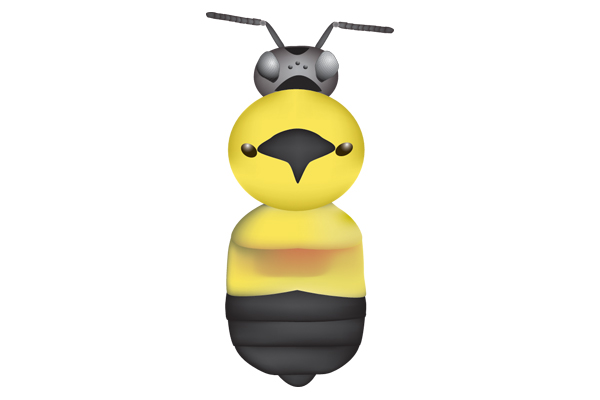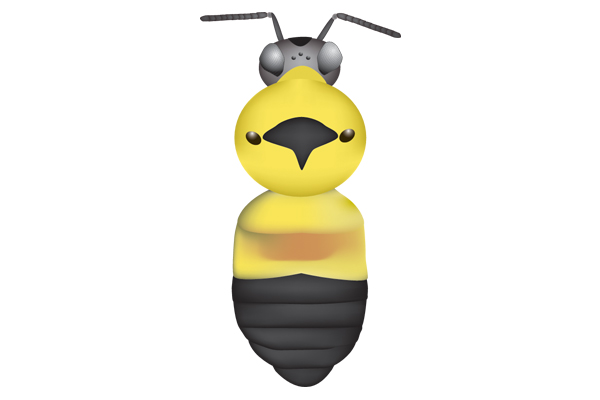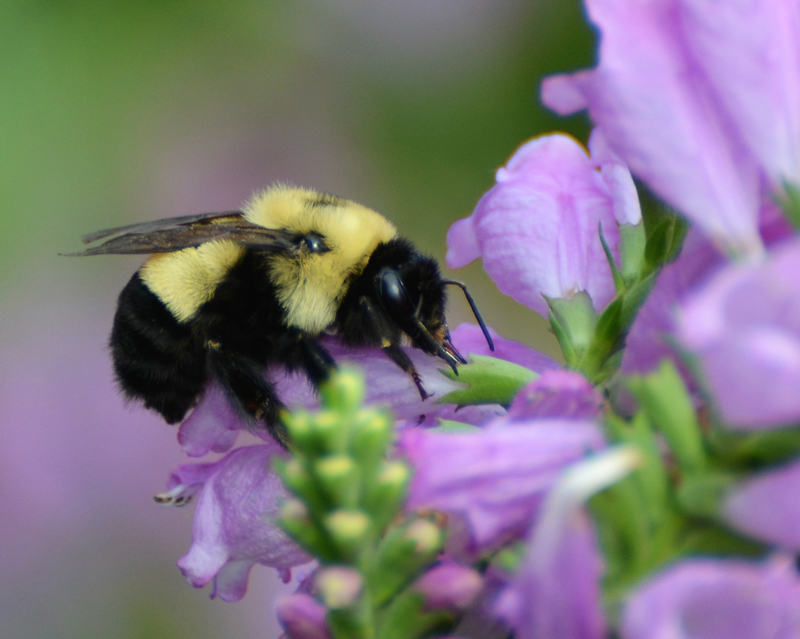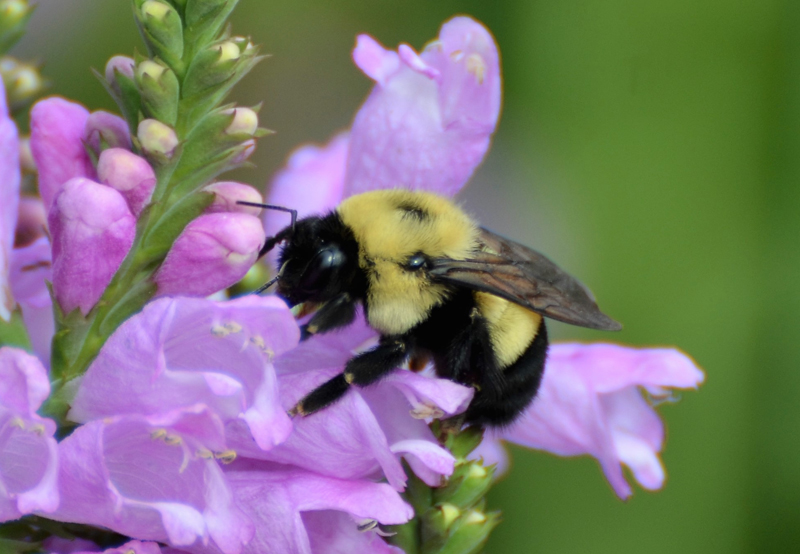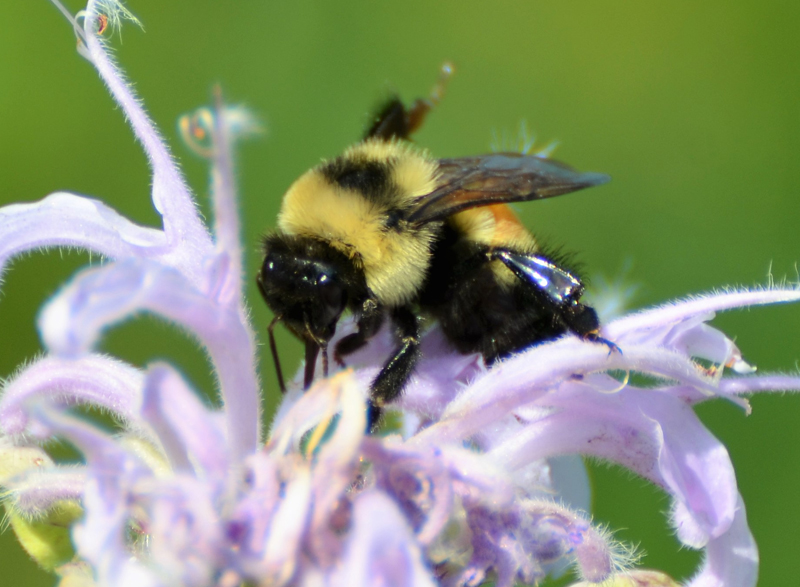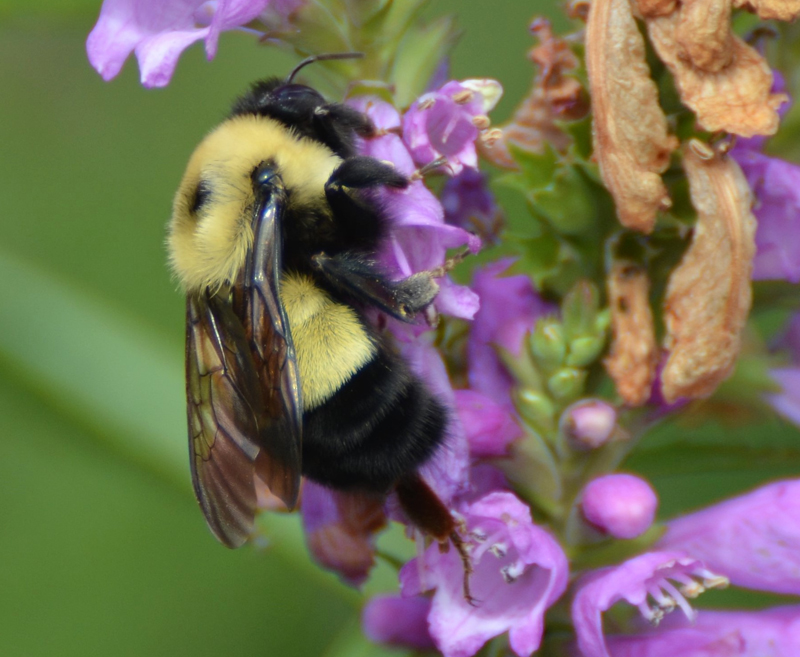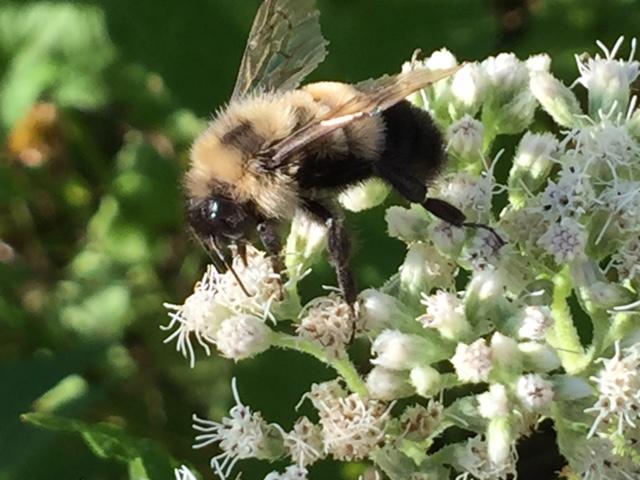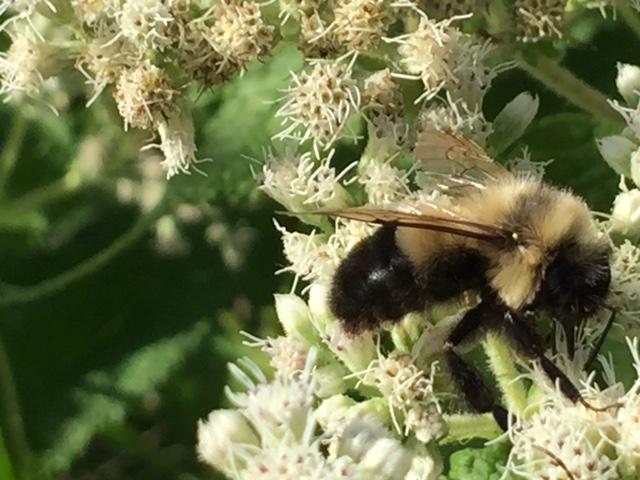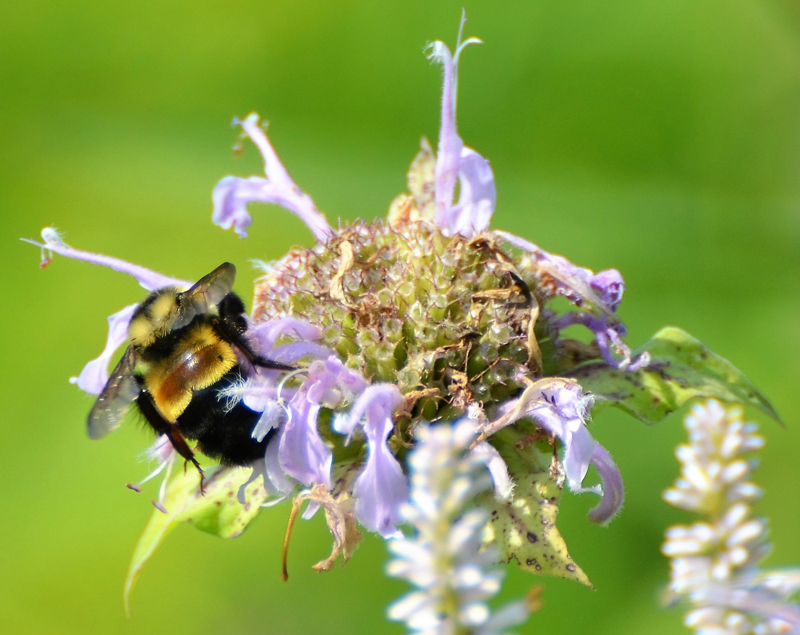
Status-Global/State:
Global: G1 Wisconsin: S1 Federally Endangered
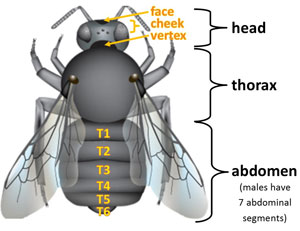
Identification:
- Worker – Face and vertex black. Thorax mostly yellow with a black spot or band between the wingpads often triangular-shaped pointed away from the head. Abdominal segments T1-2 yellow with a brown or rusty patch on T2 towards the center surrounded by yellow; T3-6 black.
- Queen/gyne – Similar to workers except they are completely yellow on T1-2 and do not have a "rusty" patch. Queens/gynes are larger than workers and appear earlier in the season.
- Male – Similar to workers except males have light hairs on the vertex.
- Other distinguishing features – Short face and medium length hair. Queens/gynes have short even hair.
Similar Wisconsin Species:
Similar bumble bee species in Wisconsin are twospotted bumble bee (B. bimaculatus), brownbelted bumble bee (B. griseocollis), common eastern bumble bee (B. impatiens), and half-black bumble bee (B. vagans) (Williams et al. 2014).
Description of Habitat/Range:
Known habitats include prairies, woodlands, marshes/wetlands, agricultural landscapes and residential parks and gardens (Williams et al. 2014). Overwintering habitats include loose and often sandy soils or woodlands. Nest sites have occasionally been found above ground in clumps of grasses, but are usually 1-4 feet underground in abandoned rodent nests or other cavities (USFWS 2011).
Nectar Plants
The rusty patched bumble bee is a short-tongued species (Williams et al. 2014), typically found on open flowers. Nectar plants include Aesculus (buckeye), Agastache (hyssops), Asters, Helianthus (sunflowers), Lonicera (honeysuckles), Monarda (bee balms), Physotegia (obedient plant), Prunus (plums/cherries), Solidago (goldenrods), and Vaccinium (blueberry) (Williams et al. 2014, Colla et al. 2011, Watson pers. com).
Data from verified B3 observations [updated 2/28/2024].
Flight Season:
The rusty patched emerges early in spring and is one of the last species to go into diapause. In Wisconsin, observations have been reported between April and October.
Literature Cited:
Colla, S., Richardson, L. and Williams, P. (2011) Bumble Bees of the Eastern United States. A product of the USDA Forest Service and the Pollinator Partnership with funding from the National Fish and Wildlife Foundation.
Hatfield, R., Jepsen, S., Thorp, R., Richardson, L., Colla, S., Foltz Jordan, S. and Evans, E. (2015) Bombus affinis. The IUCN Red List of Threatened Species 2015: e.T44937399A46440196.
United States Fish and Wildlife Service (2017) Rusty Patched Bumble Bee Fact Sheet.
Williams, P.H., Thorp, R.W., Richardson, L.L. and Colla, S.R. (2014) The Bumble bees of North America: An Identification guide. Princeton University Press, Princeton.
